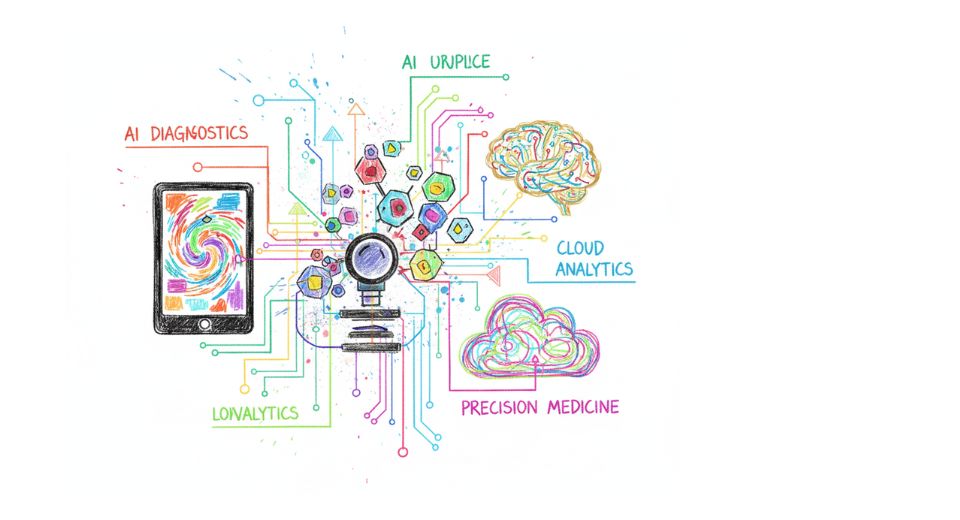
Sep 10, 2025

The Global Digital Pathology Market Report by Metastat Insight provides a comprehensive overview of how technology is transforming diagnostic processes and laboratory operations across regions. Digital pathology has evolved from a supporting tool to a key component of clinical and research decision-making. More applications of high-resolution imaging and data platforms have transformed the former slide-based world into one that is heavily digitized with artificial intelligence, image sharing, and advanced storage systems. This transformation has re-written the way laboratories communicate, how experts exchange information, and how institutions breach past boundaries.
Embracing digital pathology is not only transforming the work process of pathologists but also affecting larger health care systems. Research centers, hospitals, and private laboratories are implementing computer workflows to enhance accuracy, reduce turn-around times, and have centralized repositories of information. It has also made it easier to be compatible with telemedicine and cloud-based systems, which in turn has helped remote consultation, which is revolutionizing the communication process of healthcare organizations. These characteristics are being considered strategic assets more and more, forming networks that foster global cooperation. The shift is gradual but ongoing, a cultural as well as technological evolution across the industry.
The global digital pathology industry has been fueled by advances in scanning technology that provide high-resolution images that are accurate and suitable for both research studies and for clinical applications. These advances have opened new windows of opportunity for machine learning applications, which rely heavily on big data. Labs are increasingly benefitting from digitized collections as they support retrospective studies, quality control, and training without the logistical burden of holding large collections physically. Enhancement of access to archived materials is also encouraging cross-border research collaborations, in which institutions can participate in studies previously constrained by geography. The interplay between digital pathology and artificial intelligence has been the hallmark of this shift. Algorithms for detecting patterns are assisting pathologists in detecting abnormalities with more certainty.
While such instruments don't supplant human judgment, they augment decision-making and provide added layers of verification. Adoption of such algorithms in routine workflows is leading organizations to explore new business models, highlighting predictive intelligence and data monetization. The environment is not just about image capture and storage anymore; it's more about intelligent systems that can read, learn, and adjust. Commercialization of digital pathology in the pharmaceutical industry is also very important. Drug discovery and development processes are being facilitated by tissue analysis done digitally, saving time and enhancing clinical trial accuracy. Pharmaceutical companies are using digital platforms for toxicology research, biomarker identification, and validation of therapeutic strategy.
Applications extend the value proposition from diagnostics to the research areas where speed and accuracy are paramount. With the pharma sector more and more driven by data, digital pathology is taking a position as an underlying asset. Educational institutions are contributing to the expansion of the global digital pathology market. Universities and vocational institutes are integrating digital platforms into their curricula, offering students access to huge repositories of digitized samples. This democratizes information and offers reliable material for instruction, regardless of geography. Academic adoption not only creates future specialists who are familiar with digital protocols but also enhances the merging of research with clinical practice.
Therefore, new generations of professionals are entering with computer skills never before seen. Challenges remain for widespread adoption of digital pathology, most notably in regard to regulative norms and interoperability between systems. There are compliance frameworks in each region, and harmonization is still making progress. Organizations will need to navigate knotted pathways to ensure conformity while also maintaining efficiency. Aside from this, the digital infrastructure entails massive upfront investment in storage, security, and connectivity. Institutions embarking on large-scale adoption need to overcome these logistical aspects to realize the maximum potential of the technology.
Nonetheless, despite such hurdles, momentum keeps gathering steam as stakeholders become aware of the strategic value of long-term gains. Cultural shift beneath digital pathology is equally important. Experts who have traditionally depended on glass slides and microscopes are converting to digital screens and software-based processes. The shift requires not only facility but also attitude modification, training, and faith in digital mechanisms. Professional communities are aiding the transition by conducting workshops, conferences, and shared forums that facilitate easier learning. Gradual acceptance is building common perception that digital practices may be employed alongside traditional ones, with a hybrid model during the transition phase.
On the bigger canvas, development in the global digital pathology market is a reflection of how medicine, research, and education are converging on common digital platforms. Laboratories and institutions across various continents are creating virtual bridges, making what was once an isolated activity a group-based, networked activity. With each new adoption, the knowledge bank worldwide is collectively enhanced, encouraging innovations in industries. The digital platform is slowly creating situations for improved outcomes, from diagnostics to pharmaceutical development to training students. The Metastat Insight Global Digital Pathology Market Report ends by putting emphasis on the revolutionary potential of this technological transformation.
Artificial intelligence integration to pharma research and education embracing it, digital pathology is reaching beyond the scope of a single discipline. Its influence is felt across more than a single dimension of healthcare and science, pointing to moments when digital platforms will take center stage in knowledge creation and clinical practice. This broad-spectrum vision ensures that digital pathology is not merely a tech enhancement but a structural change that's redefining norms on the global stage.
Drop us an email at:
Call us on:
+1 214 613 5758
+91 73850 57479